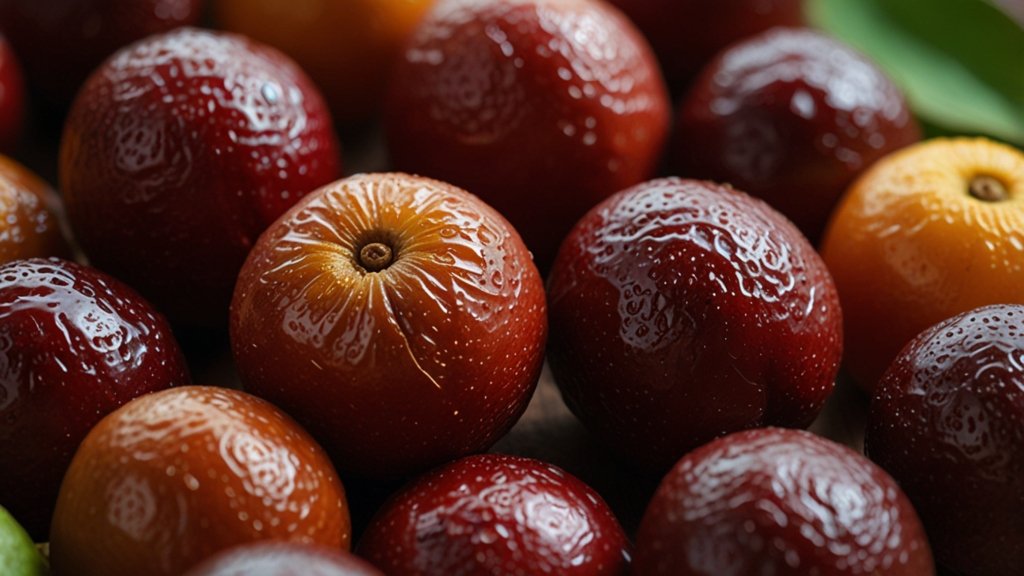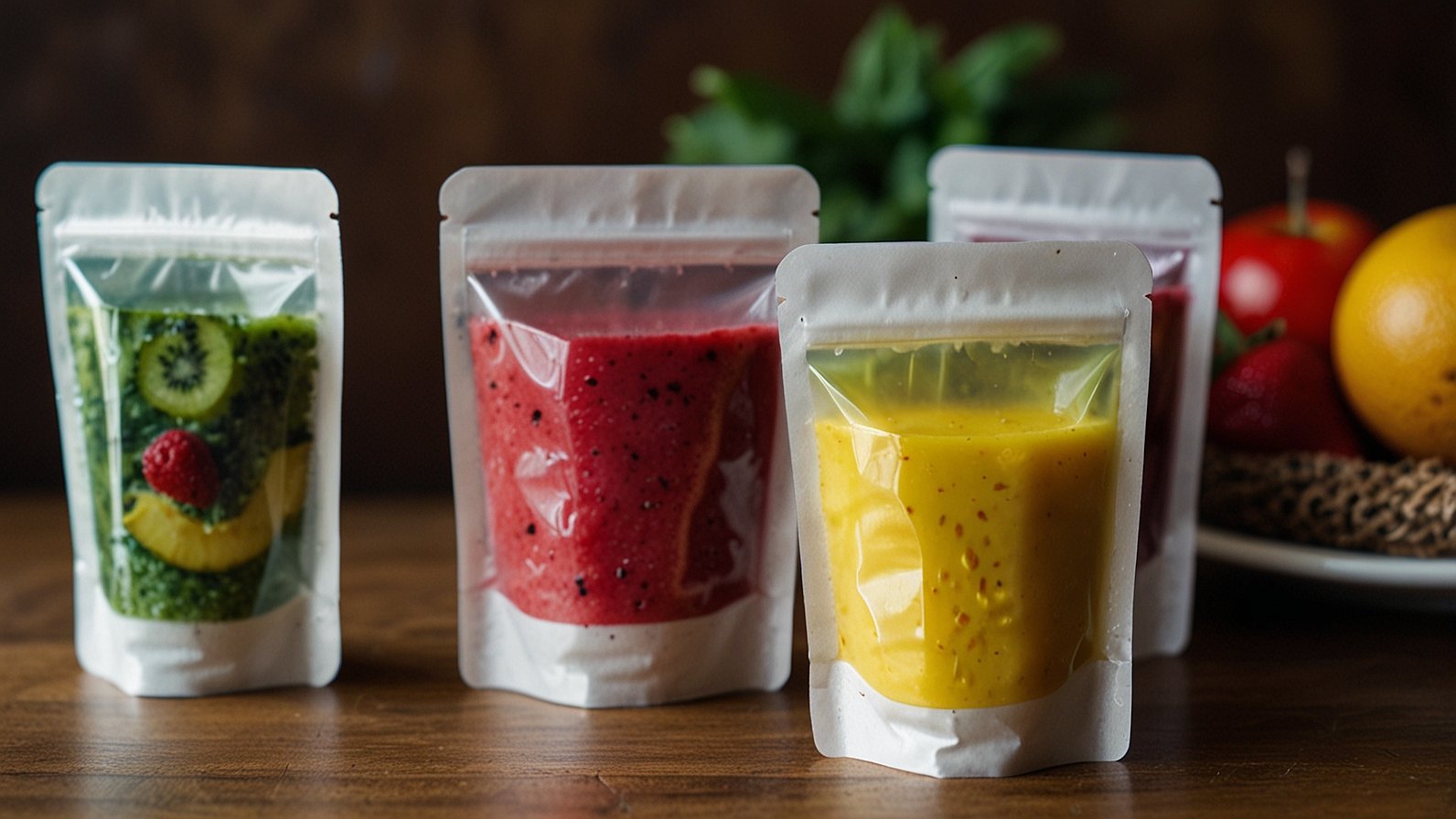Hook a piece of dried fruit that looks like a date but tastes like a crisp apple? Sounds impossible, right? Yet, for millennia, cultures stretching from the banks of the Yellow River to the shores of the Mediterranean have cherished exactly that. Forget the flashy superfoods of the moment; sometimes, the most potent treasures are the ones quietly passed down through generations. Meet the žižole (pronounced zhee-zhol or zhizh-uh-lay, depending on who you ask). This unassuming reddish-brown drupe, the fruit of the hardy Ziziphus jujuba tree, is a powerhouse of history, flavor, and function. And honestly? It’s about time the rest of the world caught on.
Often dubbed the “Chinese date” or “red date,” the žižole is far more than just a sweet treat. This deciduous shrub, part of the buckthorn family (Rhamnaceae), has weathered centuries, cultivated relentlessly across temperate and tropical zones since before recorded history began. Native originally to that vast belt of Southwest Asia and China, its journey mirrors the Silk Road itself. Picture this: smooth, green orbs clinging to thorny branches, slowly transforming under the sun into wrinkled, mahogany-hued jewels. Bite into one fresh, and you get a surprising crunch reminiscent of a firm apple. Let it dry? It morphs into a chewy, date-like delight, concentrating its unique, honeyed sweetness. But the real magic lies beneath the skin – a cocktail of vitamin C, gut-loving fiber, and bioactive compounds revered in ancient pharmacopeias for bolstering immunity and soothing digestion. It’s a functional food long before the term was coined, a culinary chameleon now stepping confidently beyond its traditional Asian and Mediterranean havens.
From Ancient Roots to Modern Plates: The Epic Journey of Ziziphus Jujuba
Let’s rewind the clock. Way back. We’re talking over 4,000 years, deep in the cradle of Chinese civilization. Archaeological whispers and ancient texts like the “Classic of Poetry” (Shijing) sing praises of the jujube tree. It wasn’t just food; it was medicine, it was symbolism – longevity, prosperity, even fertility. The tree itself? Tough as nails. Seriously, this thing laughs at droughts, scoffs at poor soils, and endures winters that would make lesser plants weep. That resilience fueled its spread. Along bustling trade routes, carried by merchants, monks, and migrating peoples, the žižole traveled west. It found fertile ground in Persia, the Caucasus, and eventually the sun-drenched hills of the Mediterranean. The Romans knew it. The Greeks used it. It became embedded in Ayurvedic traditions in India. Talk about a well-traveled fruit!
For centuries, its fame remained largely regional. Asian communities savored it fresh, dried, candied, in teas, soups, and tonics. Mediterranean cultures embraced it similarly. But in the West? It lingered in botanical gardens or niche ethnic markets, a curious oddity rather than a staple. So, what changed? Well… a few things. The global superfood wave certainly lifted many traditional boats. Increased scientific interest began validating what traditional medicine knew empirically – this little fruit packs a biochemical punch. Plus, the growing demand for natural, functional ingredients in everything from snacks to supplements created the perfect storm. Suddenly, the humble žižole wasn’t just grandma’s remedy; it was a trending ingredient popping up in gourmet chocolates, energy bars, and wellness lattes in Brooklyn and Berlin. Funny how the wheel turns, isn’t it?
Fresh vs. Dried Žižole: A Flavor & Texture Showdown
Okay, let’s get sensory. Encountering a žižole for the first time can be confusing. Is it a date? A weird plum? The truth is, its character shifts dramatically depending on its state. This duality is its superpower.
- Fresh Žižole: Imagine a small, smooth-skinned fruit, ranging from lime-green (unripe) to mottled reddish-brown (ripe). When perfectly ripe and crisp, biting into one is a revelation. The texture is apple-like – juicy, crunchy, refreshing. The flavor profile? A delightful, subtle sweetness, often compared to a mild apple or pear, sometimes with faint tropical notes. It’s incredibly refreshing, perfect for snacking or adding a unique crunch to salads. But here’s the catch: their peak fresh season is relatively short, and they bruise easily. Finding truly fresh, high-quality žižole outside major Asian markets or areas where they’re grown can still be a challenge. When you do find them? Grab them. They’re a fleeting treasure.
- Dried Žižole: This is how most of the world encounters them, and for good reason. Drying concentrates the sugars and transforms the texture entirely. The once-crisp fruit shrinks, its skin becoming deeply wrinkled and a rich, dark reddish-brown – hence the “Chinese date” moniker. The texture becomes dense, sticky, and satisfyingly chewy, much like a date, but often less cloyingly sweet and with a more complex, almost caramel or honey-like depth. Dried žižole are shelf-stable powerhouses. They last for ages, making them perfect for trail mixes, baking (think energy balls or bread), stews (they add a lovely sweetness to savory dishes like tagines), or simply eaten by the handful. They’re also the primary form used in traditional medicine teas and decoctions.
Žižole: Fresh vs. Dried – Your Quick Comparison Guide
| Feature | Fresh Žižole | Dried Žižole |
|---|---|---|
| Appearance | Smooth skin, green to reddish-brown | Deeply wrinkled, dark reddish-brown |
| Texture | Crisp, juicy, apple-like | Chewy, dense, date-like |
| Flavor | Mildly sweet, subtle (apple/pear notes) | Concentrated sweetness (honey/caramel notes) |
| Shelf Life | Short (days to a week or two, refrigerated) | Very Long (months to a year, stored properly) |
| Availability | Seasonal, limited outside growing regions | Widely available year-round globally |
| Best Uses | Snacking, salads, fresh applications | Snacking, baking, cooking, teas, stews |
| Sugar Content | Lower | Higher (concentrated) |
| Vitamin C | Higher (degrades somewhat with drying) | Lower, but still present |
The Verdict? Don’t choose – embrace both! They offer distinct, equally valuable experiences. Fresh is a refreshing, crunchy delight. Dried is a portable, versatile, flavor-concentrated powerhouse. Having both in your pantry is the sign of a true žižole aficionado.
Also Read: Unwrapping the Mystery of Mannacote: Your Ultimate Comfort Food Guide
Beyond Sweetness: Unpacking the Potent Health Arsenal of Žižole
Alright, let’s talk about why žižole isn’t just delicious. For 4,000 years, it wasn’t cultivated purely for its snackability. Traditional Chinese Medicine (TCM), Ayurveda, and numerous folk medicine systems revered it. Modern science is increasingly peering into its biochemical makeup and nodding in agreement. Here’s where the žižole truly shines as a functional food:
- Immunity’s Old Friend (Vitamin C Power): Fresh žižole are surprisingly potent sources of Vitamin C. We’re talking levels comparable to citrus fruits, gram for gram. This essential nutrient is a linchpin for immune function, acting as a powerful antioxidant to combat free radicals and supporting the production and activity of white blood cells. While drying reduces Vitamin C content somewhat, dried žižole still contribute meaningfully. Think of them as nature’s little immune-boosting candies.
- Gut Harmony Champion (Fiber Focus): Whether fresh or dried, žižole are excellent sources of dietary fiber. This is crucial, folks. Fiber is the unsung hero of digestive health. It bulks up stool, promotes regularity (combating constipation), and acts as a prebiotic – essentially, food for the beneficial bacteria residing in your gut microbiome. A happy gut microbiome is linked to everything from improved digestion and nutrient absorption to better mood regulation and even stronger immunity. Žižole deliver both soluble and insoluble fiber, offering a comprehensive gut boost.
- Bioactive Bonanza (The Hidden Gems): Now we get to the really fascinating stuff. Žižole contain a complex array of bioactive compounds: flavonoids (like spinosin and swertish), saponins (like jujuboside), polysaccharides, and triterpenic acids. Research suggests these compounds contribute significantly to žižole’s traditional uses:
- Calming & Sleep Support: Compounds like jujuboside A are studied for their potential sedative and anxiety-reducing effects, supporting their traditional use for promoting relaxation and improving sleep quality. Some studies show effects comparable to certain anti-anxiety medications, but without the heavy side effects. Pretty remarkable for a little fruit.
- Antioxidant & Anti-inflammatory Powerhouse: The cocktail of flavonoids and other compounds gives žižole significant antioxidant capacity, helping to neutralize cell-damaging free radicals linked to chronic inflammation, aging, and various diseases. This systemic anti-inflammatory action underpins many of its broad health claims.
- Potential Blood Sugar Support: Some studies indicate that žižole polysaccharides may help modulate blood sugar levels and improve insulin sensitivity, though more human research is needed. It’s a promising area.
- Cardiovascular Support: Antioxidants and anti-inflammatory compounds generally support heart health. Some research also points to potential benefits for blood lipid profiles.
The Human Angle: Look, I’m not saying žižole are a magic bullet. No single food is. But incorporating them into a balanced diet offers a tangible, delicious way to tap into an ancient legacy of wellness. They’re nature’s multivitamin, wrapped in a sweet, chewy (or crisp!) package. In my experience, clients who start adding dried žižole to their oatmeal or snacking on a few fresh ones report feeling a subtle difference – more energy, better digestion. It’s not dramatic, it’s just… consistent.
Your Kitchen’s New Secret Weapon: Culinary Adventures with Žižole
Forget relegating žižole to the health food ghetto. Their culinary versatility is astounding, straddling sweet and savory with ease. Let’s ditch the intimidation and get cooking:
- The Simple Snack: The easiest gateway. Grab a handful of dried žižole. That’s it. Their natural sweetness satisfies cravings far better than candy. Fresh ones, when available, are a refreshing, hydrating treat. Try pairing a few dried žižole with a small piece of dark chocolate and some nuts – instant gourmet energy bite.
- Breakfast Boost: Chop dried žižole and stir them into your morning oatmeal, porridge, or yogurt parfait. They add natural sweetness, chewiness, and fiber. Blend a couple of soaked dried žižole into your smoothie for subtle sweetness and thickness.
- Baking Brilliance: Dried žižole are a fantastic, less sugary alternative to raisins, dates, or dried cranberries. Chop them up and add them to muffins, cookies, breads (especially whole wheat or rye), energy balls, and granola bars. They pair beautifully with nuts, seeds, oats, cinnamon, and chocolate.
- Savory Surprises (This is where it gets fun!): This might surprise Western palates, but žižole are fantastic in savory dishes. They add a subtle sweetness and depth that balances spices beautifully.
- Stews & Braises: Add whole dried žižole (pitted or not) or chopped ones to Moroccan tagines, Chinese red-braised pork (Hong Shao Rou), or hearty lamb stews. They plump up during cooking, releasing their flavor. Think of them like a more complex, less sweet date.
- Rice & Grain Pilafs: Stir chopped dried žižole into rice pilafs (especially basmati or jasmine rice), quinoa, or farro dishes alongside toasted nuts, herbs, and spices.
- Stuffings: Elevate your poultry stuffing by incorporating chopped dried žižole – they work wonders with sage, onion, and chestnuts.
- Chutneys & Relishes: Simmer chopped dried žižole with vinegar, spices (ginger, star anise, cinnamon), onion, and maybe a touch of chili for a unique and sophisticated condiment.
- Teas & Infusions: This is a classic preparation. Simmer 5-10 dried žižole (often sliced open or smashed slightly) in water for 15-20 minutes. Strain. The resulting tea is subtly sweet, earthy, and incredibly soothing, often drunk before bed. Add a slice of ginger or a star anise pod for variation. You can also find pre-made jujube tea bags.
Pro Tip: If your dried žižole seem very hard, soak them in warm water for 15-30 minutes before chopping or adding to dishes. This plumps them up and makes them easier to work with (and eat!).
Finding the Good Stuff: Sourcing & Storing Žižole Like a Pro
So, you’re sold. Where do you get these gems, and how do you keep them happy?
- Sourcing:
- Asian Grocers: Your best bet, hands down. Look for fresh žižole in season (usually late summer/fall), often sold in plastic clamshells. Dried žižole are ubiquitous year-round, sold loose, in bags, or boxes. Look for plump, relatively unbroken fruits with a deep, rich color. Avoid packages with excessive dust or signs of moisture. You might see them labeled as Jujube, Chinese Date, Red Date, Hong Zao (Chinese), or Annab (Arabic/Persian).
- Health Food Stores: Increasingly common, especially the dried variety. Often found in the bulk bins or packaged in the dried fruit/nut section.
- Online Retailers: Amazon, specialty food sites (like nuts.com), and even some larger supermarkets now offer them. Check reviews for quality.
- Farmers Markets: If you live in a region where jujubes are grown (like parts of California, Arizona, or the Southeast US), you might score fresh ones directly from growers during harvest season. A real treat!
- Storing:
- Fresh Žižole: Handle gently! They bruise easily. Store them unwashed in a loosely closed plastic bag or container in the crisper drawer of your refrigerator. They should last 1-2 weeks. Check occasionally and remove any that start to soften excessively or spot.
- Dried Žižole: The champions of longevity. Store them in an airtight container in a cool, dark, dry place (like your pantry). A glass jar is ideal. Properly stored, they can last for many months, even up to a year, without significant quality loss. No fridge needed! If you live in a very humid climate, tossing in an oxygen absorber packet can help prevent any potential softening.
Quality Check: For dried žižole, avoid bags with lots of stem fragments, leaves, or an excessive number of broken or shriveled fruits. They should smell subtly sweet and earthy, not musty or sour. Fresh ones should feel firm (like a slightly underripe apple) and have taut skin without blemishes or soft spots.
You May Also Read: Navigating Modern Parenting: Your Evidence-Based Community at oneworldcolumn.org
The Final Bite: Why Žižole Deserve a Spot in Your Pantry (and Your Life)
Let’s be honest. The world of superfoods can be noisy, fleeting, and often disappointingly expensive. Žižole offer something different: a profound sense of continuity. Holding one of these wrinkled fruits is like holding a tiny piece of human history, a thread connecting us to healers and farmers millennia ago. But this isn’t just about nostalgia. It’s about substance.
They deliver genuine nutritional value – a potent blend of vitamin C for defense, fiber for gut harmony, and a fascinating array of bioactive compounds science is only beginning to fully appreciate. They are versatile beyond belief, effortlessly transitioning from a simple snack to a sophisticated ingredient in both sweet indulgences and complex savory masterpieces. They store beautifully. They’re relatively affordable, especially dried. And honestly? They taste good. Really good.
Some might see them as just another “ancient fruit” trend. I see them differently. I see a resilient, time-tested food finally getting its well-deserved global recognition. Incorporating žižole isn’t about chasing a fad; it’s about embracing a piece of edible wisdom, a small, delicious step towards a more diverse and nutrient-rich way of eating. Why not grab a bag of dried žižole on your next grocery run? Toss a few in your oatmeal tomorrow morning. You might just discover your new favorite ancient secret. What unexpected way will you start using them?
FAQs
How do you pronounce “žižole”?
It depends on the region! The most common pronunciations are “zhee-zhol” (like the ‘s’ in “measure” + “zhol”) or “zhizh-uh-lay” (emphasizing the last syllable). In English, you’ll often just hear “jujube” (joo-joob).
Are žižole the same as dates?
No, they are different fruits from entirely different plant families. Dates come from date palms. Žižole come from the jujube tree (Ziziphus jujuba). They look similar when dried and share a chewy texture, but their flavors and nutritional profiles differ. Žižole often have a more complex, less intensely sweet flavor than dates.
What are the main health benefits of eating žižole?
Žižole are valued for being rich in immune-supporting vitamin C (especially fresh), gut-healthy dietary fiber, and unique bioactive compounds. These compounds are linked to potential benefits like improved sleep, reduced anxiety, potent antioxidant/anti-inflammatory effects, and possibly supporting blood sugar balance and heart health.
Can I eat žižole seeds?
The seeds inside žižole are hard pits, similar to date pits. They are generally not eaten. Some traditional medicinal practices use the crushed seeds in specific preparations, but for culinary purposes, spit them out or remove them before eating/cooking, especially with dried fruits where the pit can be hard to spot. Some commercially dried žižole are sold pitted.
Where can I buy žižole?
Your best local options are Asian grocery stores or well-stocked health food stores. Dried žižole are also readily available online (Amazon, specialty retailers). Fresh žižole are more seasonal and may be found at Asian grocers or farmers markets in regions where they are grown.
How many žižole should I eat per day?
There’s no strict rule. A moderate serving is typically around 3-5 dried žižole or a small handful of fresh ones (maybe 5-8). Like any dried fruit, be mindful of the natural sugar content. Listen to your body and enjoy them as part of a varied diet.
Are there any side effects or people who should avoid žižole?
Žižole are generally safe for most people. However, due to their fiber content, eating large amounts suddenly might cause temporary digestive upset (gas, bloating). Introduce them gradually. If you are taking diabetes medication or sedatives, consult your doctor due to žižole’s potential effects on blood sugar and sedation. Allergies are rare but possible.










